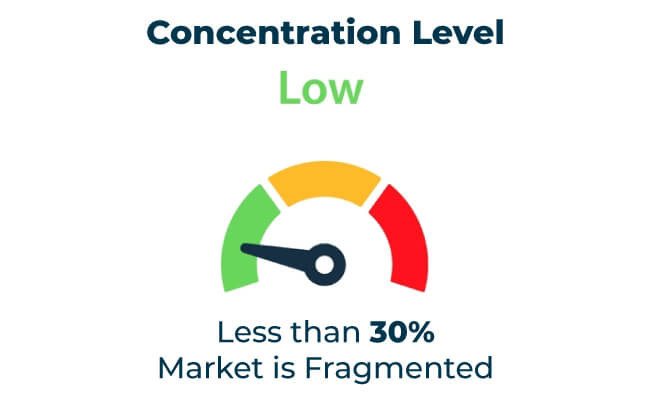The cup carrier packaging market is witnessing substantial growth, driven by the rising demand for convenient, sustainable, and functional packaging solutions in the foodservice and beverage industries. Key drivers include increasing environmental awareness, innovations in design and materials, and the demand for packaging that enhances customer experience and brand identity.
Manufacturers are focusing on recyclable, biodegradable, and lightweight materials with ergonomic and customizable designs tailored to meet the needs of foodservice providers and beverage brands. Strategic partnerships with quick-service restaurants (QSRs), cafes, and retail chains are further driving market growth.
Exclusive Offer: 30% Off on Regional Reports
Get a free sample report and customize your regions for a 30% discount on your regional report!
Summary
The SWOT analysis highlights the positioning of major companies in the cup carrier packaging market. Huhtamaki leads with innovations in sustainable materials but faces challenges in scaling up cost-efficient production. Pactiv Evergreen excels in functional and durable carrier designs but struggles with high production costs.
Stora Enso focuses on eco-friendly solutions but encounters challenges in competing with emerging players. Opportunities include leveraging advanced materials and expanding into emerging markets, while threats include fluctuating raw material costs and regulatory shifts.
Huhtamaki
Huhtamaki demonstrates strengths through its innovative use of sustainable materials and advanced production technologies. However, the company’s weaknesses lie in the higher costs associated with premium sustainable packaging. Opportunities include collaborating with leading beverage chains and expanding its portfolio of biodegradable solutions. Threats arise from increasing competition and material supply constraints.
Pactiv Evergreen
Pactiv Evergreen stands out for its functional and durable cup carrier designs tailored for high-volume foodservice operations. However, its high production costs remain a significant challenge. The company can explore opportunities in automation to reduce costs and expand its market presence in Asia-Pacific. Nevertheless, threats include rising competition from mid-tier manufacturers and regulatory pressures on single-use packaging.
Stora Enso
Stora Enso’s strengths lie in its commitment to eco-friendly materials and sustainability-focused innovation. However, its weaknesses include limited production scalability compared to leading competitors. The company has opportunities to expand partnerships with eco-conscious foodservice providers and QSRs. Threats include increasing competition from startups offering cost-effective solutions.
| Category | Market Share (%) |
|---|---|
| Top 3 Players (Huhtamaki, Pactiv Evergreen, Stora Enso) | 12% |
| Rest of Top 5 Players | 08% |
| Next 5 of Top 10 Players | 06% |
Type of Player & Industry Share (%)
| Type of Player | Market Share (%) |
|---|---|
| Top 10 Players | 26% |
| Next 20 Players | 42% |
| Remaining Players | 32% |

Year-on-Year Leaders
North America and Europe have strict regulations promoting sustainable alternatives to single-use plastic packaging. Asia-Pacific is adopting similar measures, driven by growing consumer awareness and governmental incentives for sustainable packaging solutions.
Check Free Sample Report & Save 40%!
Select your niche segments and personalize your insights for smart savings. Cut costs now!
Emerging markets in South America, Africa, and parts of Asia-Pacific present significant growth opportunities. Affordable, scalable, and eco-friendly carrier solutions are in demand to meet consumer and regulatory expectations.
In-House vs. Contract Manufacturing
The cup carrier packaging market will expand through innovations in materials, ergonomic designs, and technology integration. Companies that invest in scalable production, sustainability, and strategic partnerships will maintain a competitive edge. Expanding recycling and composting infrastructure will further enhance adoption.
| Tier | Key Companies |
|---|---|
| Tier 1 | Huhtamaki, Pactiv Evergreen, Stora Enso |
| Tier 2 | International Paper, Novolex |
| Tier 3 | Fabri-Kal, Sabert, Biopak |
The cup carrier packaging market is poised for significant growth, driven by sustainability goals, innovations in design, and evolving consumer preferences. Companies investing in eco-friendly materials, ergonomic designs, and scalable production will secure leadership in this rapidly evolving market.
Key Definitions
Abbreviations
Research Methodology
This report is based on primary research, secondary data analysis, and market modeling. Expert consultations validated the insights, providing accurate market projections and recommendations.
Market Definition
The cup carrier packaging market includes materials and designs intended to enhance the functionality, sustainability, and convenience of packaging solutions used by foodservice providers and beverage brands.
The growth is fueled by increasing demand for sustainable, functional, and ergonomic packaging solutions.
The market is projected to reach USD 620.3 million, growing at a compound annual growth rate (CAGR) of 5.2%.
Leading players include Huhtamaki, Pactiv Evergreen, and Stora Enso.
Key challenges include high production costs, regulatory inconsistencies, and limited recycling infrastructure.
Opportunities lie in material innovations, strategic partnerships, and the increasing adoption of sustainable practices.
Explore Packaging Formats Insights
View Reports
Thank you!
You will receive an email from our Business Development Manager. Please be sure to check your SPAM/JUNK folder too.